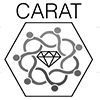Photoactivation of protein redox sites
The proposed project will lead to new fundamental understanding of biological electron transfer and produce knowledge essential for construction of protein-based phototocatalytic systems. In particular: 1) Unravel control mechanisms of protein redox processes that occur via electron hopping. Namely, (i) understand the role and activity of tryptophan, tyrosine, methionine, and cystein, (ii) understand the function of the environment (protein matrix, solvent), and (iii) understand the coupling of structural and solvation dynamics with electron transfer. 2) Construct redox pathways in selected proteins (namely cupredoxins) to achieve fast and high-yield long-range electron transfer. 3) Develop at least one functional protein system able to photocatalyze redox reactions such as oxidation of organic substrates or water. 4) Generalize the results and formulate design rules for protein-based photocatalysis. 5) Develop understanding of the molecular mechanism of enzyme protection from oxidative stress by removing oxidizing equivalents through chains of aromatic amino acids, with an impact on biomedical sciences. 6) Lay groundwork for future construction of efficient and stable photocatalysts of oxidation reactions based on derivatized cupredoxin enzymes, with a special emphasis on biofuel production (lignin and cellulose oxidation) and artificial photosynthesis (water oxidation). 7) Advance and deepen Czech-US scientific collaboration and contacts.
prof. RNDr. VLČEK Antonín CSc.
 qmul.ac.uk
qmul.ac.uk















